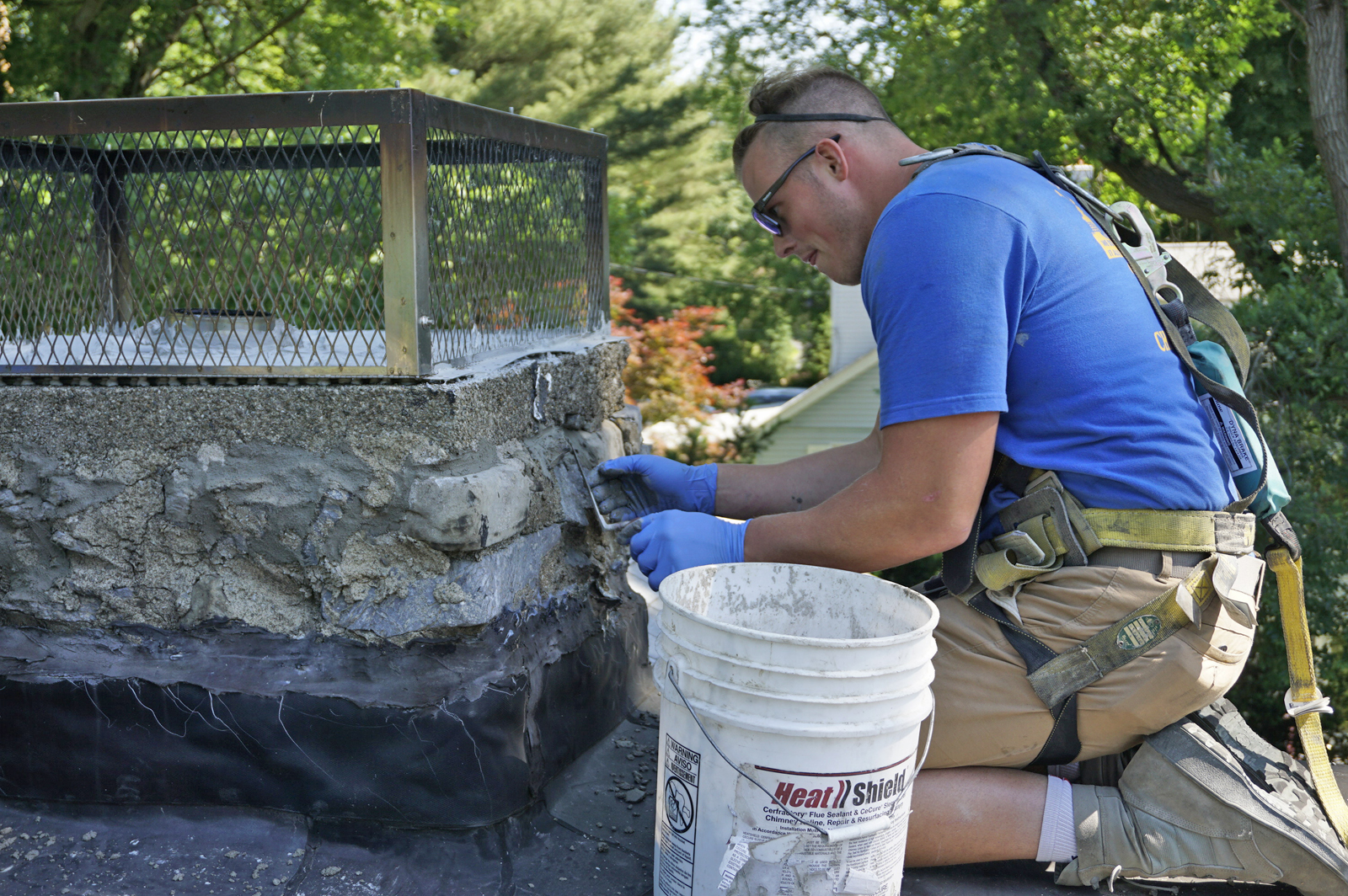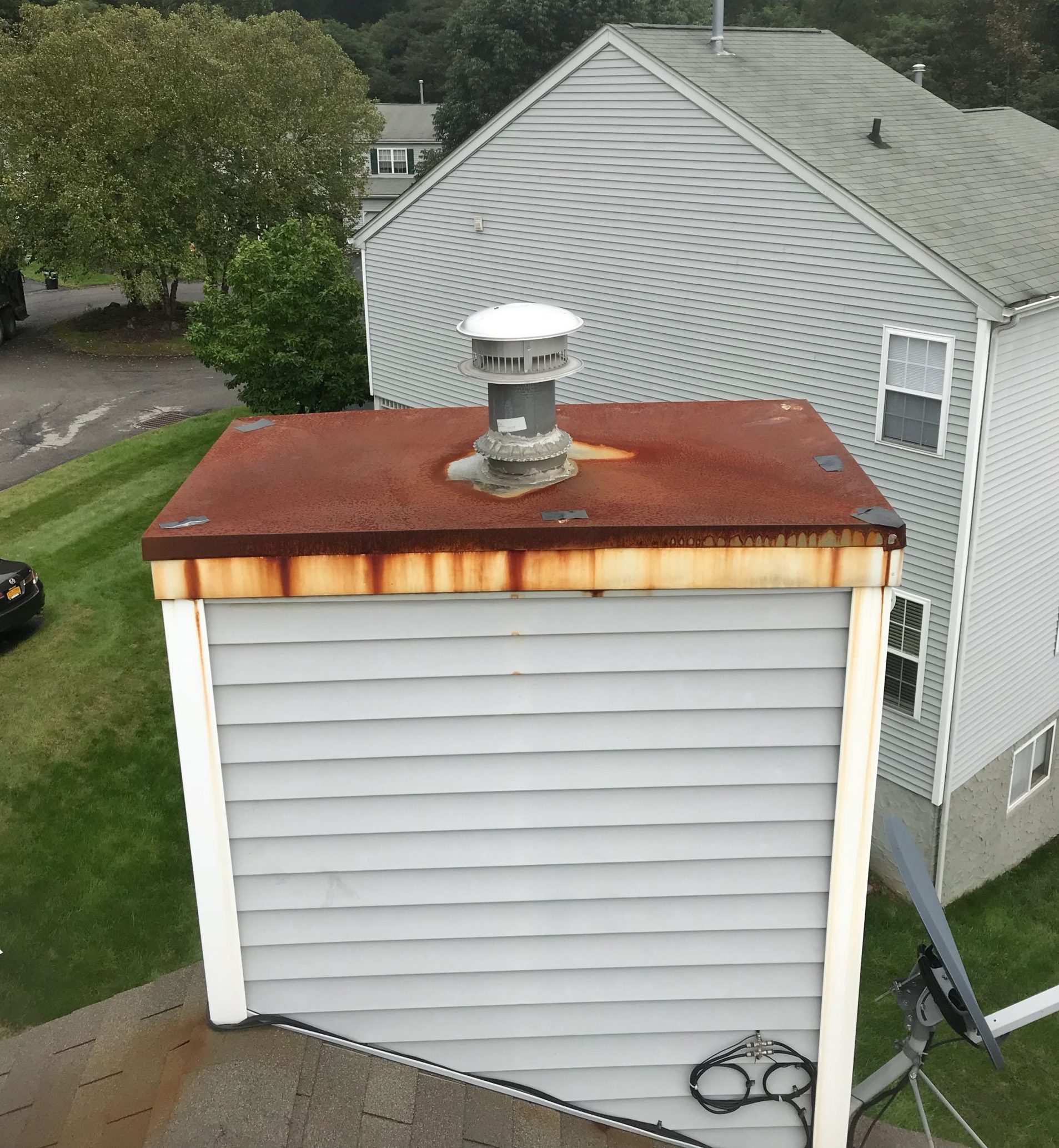5 Signs Your Chimney Is Failing
Chimneys are built to perform for decades, but stormy weather and extreme temperature swings can cause damage, that if ignored, can cause the entire structure to fail. Annual inspections, maintenance, and occasional repairs will help ensure your chimney is safe and sound. Since a failing chimney can also cause structural damage to your roof and home, you should watch out for the following signs of trouble.
Efflorescence
A white powdery film that covers some of the external bricks is called efflorescence. It occurs when water penetrates small cracks in the bricks bringing the salts and minerals deep in the brick material to the surface. Washing the white substance temporarily removes the efflorescence, only to reappear with the next rain event until the issue is resolved.
Efflorescence is a sign of spalling or damaged bricks and must be repaired as soon as possible to prevent further water leaks, damaged mortar joints, and other chimney damage.
 Damaged mortar joints
Damaged mortar joints
When you look at the chimney, you may notice erosion or gaps in the joints where the mortar bonds to support the brick masonry. Like efflorescence, eroding mortar joints is a sign of a failing chimney. That’s because the mortar joints will continue to erode until repaired. Also, water will intrude into the stack through any gaps in the joints. This moisture will also cause the bricks to chip, crumble and fall from the chimney
The upper part of the chimney is more susceptible to mortar joint erosion from heavy rain, snow, and hail, but it is difficult to spot from ground level. However, damaged mortar joints is a severe issue that should be repaired as soon as possible. Otherwise, the entire chimney could collapse. When caught early, tuckpointing can resolve the issue. But more severe structural damage may require a partial or complete chimney rebuild.
Spalling bricks
The bricks used to build a chimney have a hard-outer shell that protects them from moisture. But age and weather can crack the shell allowing moisture to penetrate. When the moisture absorbed by the bricks freezes, it causes even bigger cracks in the brick, enabling the absorption of even more water when it thaws until they ultimately fall apart. High-powered pressure washing the chimney can also result in spalling. To prevent a failing chimney, consult with a chimney repair professional to repair the spalling bricks. Once the problem is resolved, a waterproof sealant can be applied to protect the exterior masonry.
Cracked crown
Chimney crowns are essential in preventing water from seeping inside the chimney interior where it can soften the masonry. But they often suffer damage after several seasons of turbulent weather. When you have a chimney inspection, the chimney sweep will climb to the roof to inspect the crown. Small cracks can be filled in and resealed with a waterproof bonding material. But more extensive damage will require rebuilding the chimney crown.
 Rust
Rust
Spotting any sign of rust, especially inside the chimney, is a serious issue. Where there is rust, there is water. And water leaks that are not repaired can cause the chimney to fail.
If you suspect any of these things or see anything abnormal happening with your chimney reach out to the Chimney Professionals at Hudson Valley Chimney! Call Today!
845-471-1071 – Local
800-439-1071 – Toll Free
845-471-8706 – Fax








